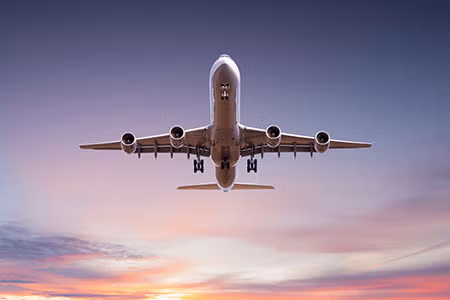Aircraft Coatings: A Vital Role Economically and Environmentally
According to the Federal Aviation Administration (FAA), the total number of aircraft in the U.S. commercial airline fleet (including regional carriers) stood at over 7,500 at the end of 2023.2 These aircraft are maintained to the highest standards set by government agencies—and this includes routine inspection and maintenance of their protective coatings. The aircraft coatings industry overall is an important contributor to the economy and was valued at roughly $140 million in 2008, according to Chemark Consulting.3
The aerospace industry expects coatings suppliers to develop products that reduce application times, improve performance and increase durability. According to the International Air Transport Association (IATA), new technology in aerospace coatings can minimize drag in the air and help reduce debris build-up, both of which reduce airplane fuel consumption, and thereby, carbon footprint. Such savings have both an economic and environmental impact that cannot be understated: a one percent improvement in fuel efficiency in the aviation industry can lower fuel costs by $700 million a year. On average, airlines incur about $100 a minute per flight in operating costs. Therefore, even saving just one minute of flight time could reduce total operating costs by more than $1 billion a year and significantly reduce environmental emissions.4
Many of the new coating innovations are focused on helping airlines become more cost effective. For example, to reduce the amount of time it takes for aircraft to undergo maintenance, new coatings systems have been developed that allow for faster application and drying of exterior top-coat applications. As another example, conventional aerospace coatings have historically been based on two-component polyurethane coatings that typically require 72 hours to cure (fully develop their physical properties). Some coatings producers have developed coatings formulations that use ultraviolet A (UVA) light to significantly accelerate the curing process. This enables airplanes undergoing topcoat refurbishing to get back into service faster. A faster turnaround for aircraft maintenance can enhance scheduling flexibility and ultimately help reduce costs.
Aerospace coatings technologies are continually being developed to help reduce environmental impact. Some examples include waterborne structural coatings and products with lower volatile organic compound (VOC), chrome and/or lead content.
